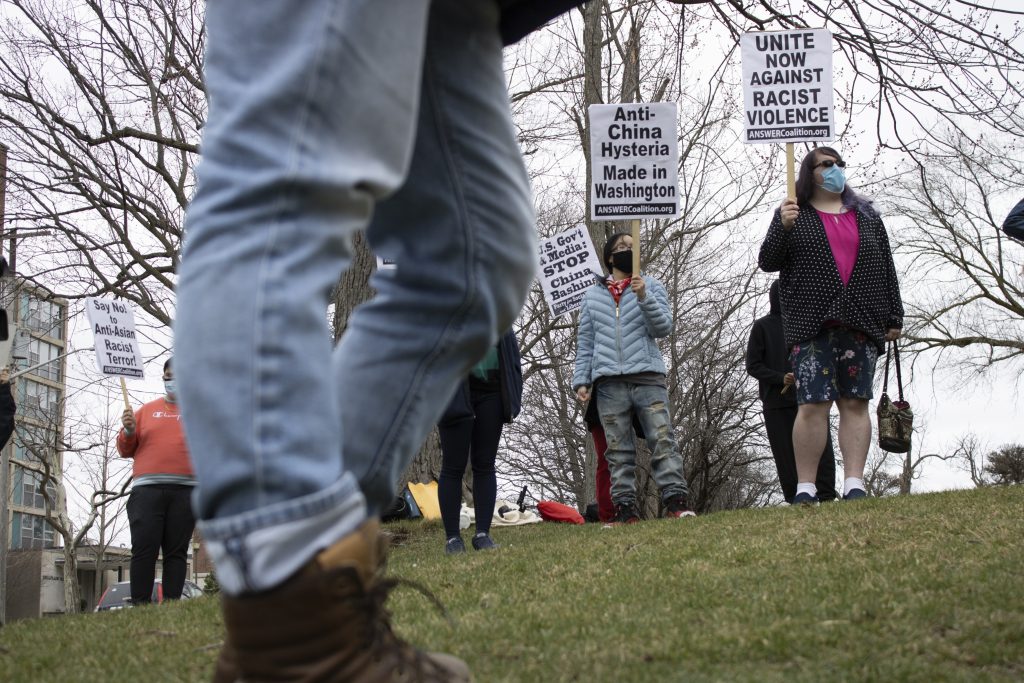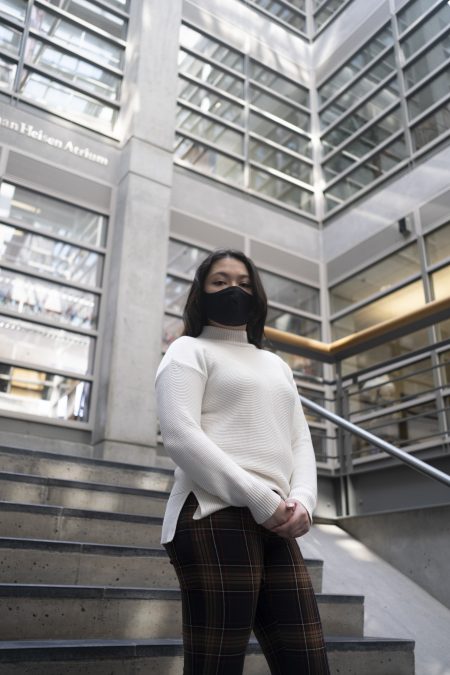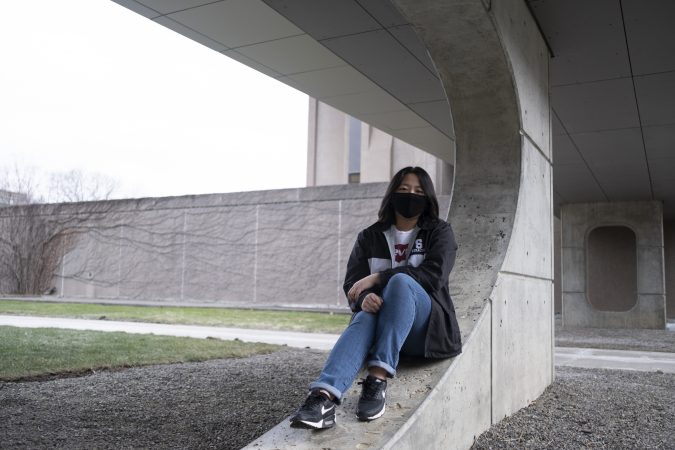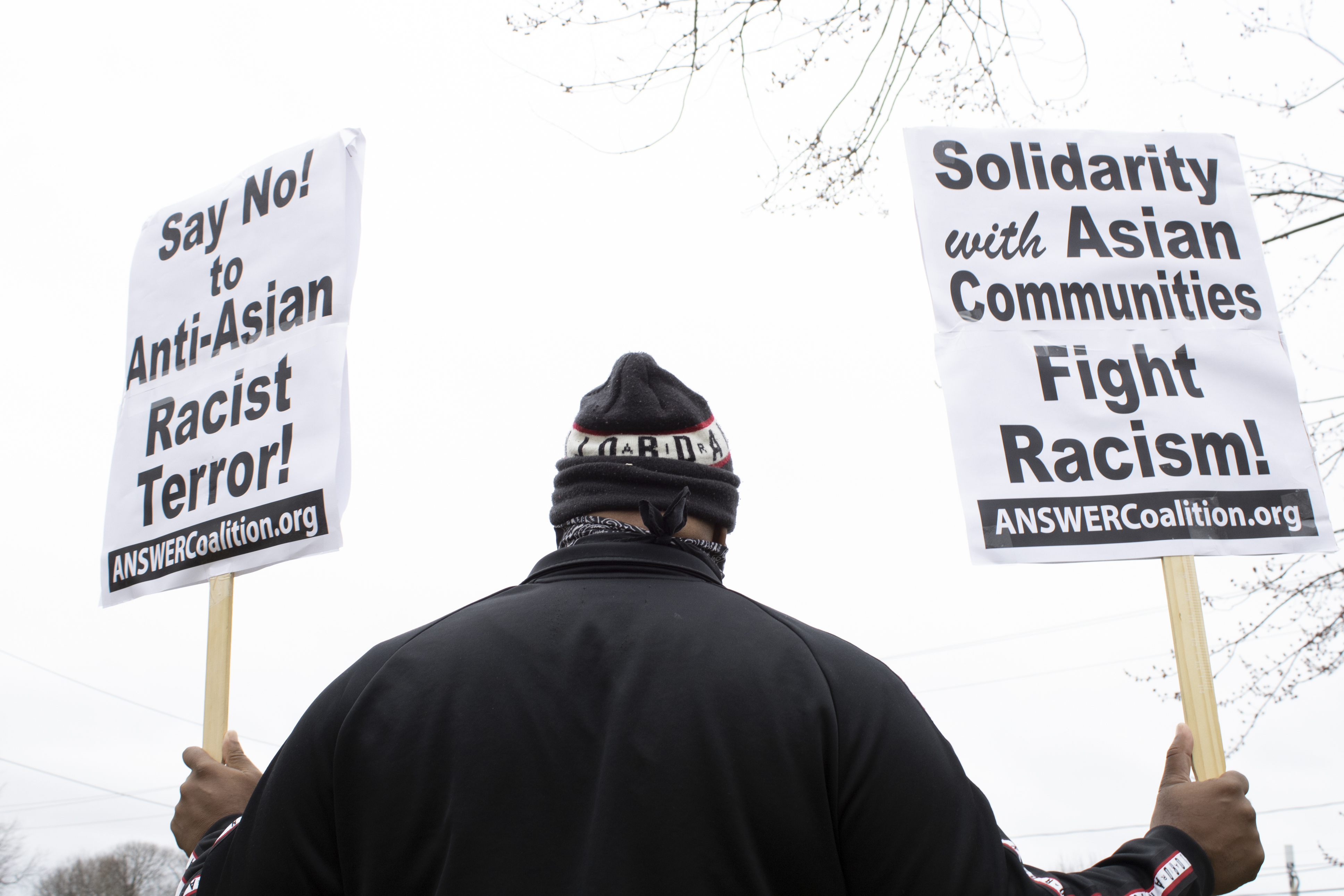Not Your Model Minority
Defying expectations for Asian Americans
Racial biases against the Asian community are prominent at Syracuse University, but being a forgotten minority allows Asian Americans to defy expectations.

hen Young-Bin Lee was approached by a fellow Asian student assuming she was in their high school’s science and engineering program despite her enrollment in the film and photography program, Lee was taken aback.
“I hate when people make assumptions about me,” she said. “I was better at humanities because I wanted to be better at humanities.”
Lee came to the Newhouse School of Public Communications at Syracuse University to study photography and broaden her career horizons with the renowned classes, programs, and student-run organizations offered.
“It is hard to feel like you can belong in Newhouse when it’s a very white school,” Lee said. “I think I developed a minor inferiority complex because everyone in a position of power around me was white.”



SU’s undergraduate enrollment remains 54.6% white, according to the university’s Office of Institutional Research Report for Fall 2020. Only 6.5% of students are Asian, according to the report.
“Honestly, I did not know that SU was only 6% Asian–that’s kind of shocking,” Lee said. “I think the pandemic this year has students meet in very closed circle groups and I found a very supportive and somewhat diverse friend group.”
Since some instruction is online because of COVID-19, Lee said she feels isolated as an Asian student in class. She said the social distancing guidelines that require students to be six feet apart during in-person instruction cause her to feel more distant from peers.
Third-year student Morgan Storino also shares Lee’s sentiments. As a chemistry major, she said she sees more students of color in science, technology, engineering, and math (STEM) classes. She believes there is less racial bias in class discussions, assigned readings, and assignments because she thinks the content is hard science that has a smaller margin of error than social sciences.
Storino said her experience in the Maxwell School of Citizenship and Public Affairs is very different from her experiences in her science classes. She said discussions and assignments are more opinion-based and subjective. She has never had another Asian student in her Citizenship and Civic Engagement curriculum.
“I can give a different perspective, especially in social justice curriculum,” said Storino. She hopes to dispel the stereotype that Asian women are passive and submissive by speaking up.
Ellen D. Wu, has a doctoral degree and is an Asian American Studies professor at Indiana University, said stereotypes of Asian Americans come from the federal 1965 Immigration Act. She said Asian immigrants first came in the Gold Rush era in the mid-1800s where they worked in mining, railroads, farmwork, and restaurants. The 1965 Immigration Act removed systematic discrimination in immigration against those that were not of northwestern European origin, she said. The United States now would favor family reunification and skill sets such as immigrants with advanced degrees who could work in high-income positions. Asian immigrants were primarily those who had a professional background and a “a two-tiered Asian immigration system emerged to fill high level and service-level jobs,” Wu said.
The March 16 shooting of eight people in Atlanta, six of whom were Asian women, has brought the reality of racism against Asian Americans to the forefront. Yingyi Ma, professor of sociology at Syracuse University, and Mary Szto, professor Law at Syracuse University, said Asian Americans have a “non-minority minority status” in the United States. Both professors said Asians are often not treated as a “real minority” so they do not have resources to help them with the discrimination they face.
Deconstructing the Divide
Szto said hate crimes such as the Atlanta attack are very similar to historical acts of racism, but those today are often ignored due to the reluctance of Asian Americans to acknowledge the racism they face. Szto said we have “buried the history of Asian-American discrimination in the United States to support the model minority myth.”
Storino believes the Model Minority myth can make it feel like she has less to complain about because Asians have better experiences in America than other minorities.
“It can feel like Asian students do not have it as bad as other minorities,” said Storino.
While Syracuse does offer the Office of Multicultural Affairs that provides support programs for students of color, Storino said many of her most valuable experiences came from student-run programs and organizations such as the Filipino Student Association and the Asian Students in America Association.
Storino feels that “having Asians in positions of power at all levels is significant,” and she is driven by seeing the success of Asian students and staff.
Young-Bin Lee hopes to be someone that other Asian women can look up to someday, knowing how much seeing Asian women in positions of power had inspired her.
“It feels nice to defy expectations,” she said.

